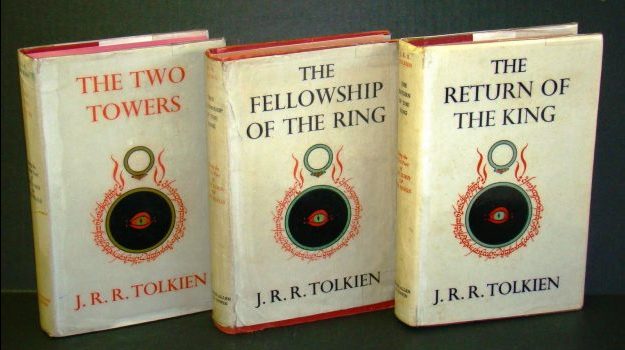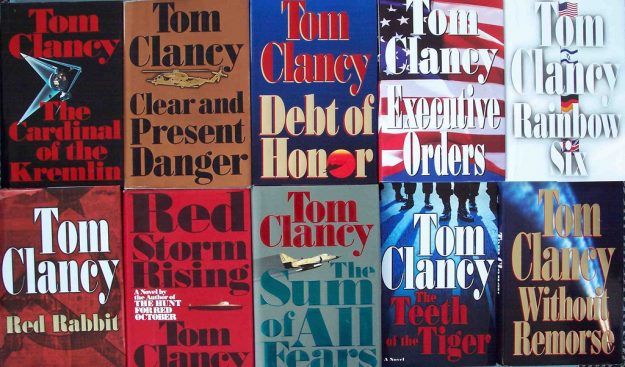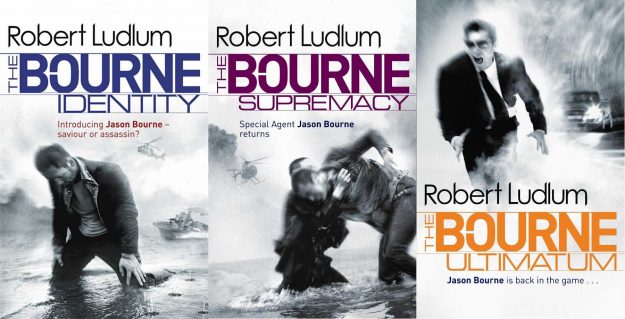Regardless of the format, it is not much of a stretch to say that a great story starts with a few core themes, skillful plotting, and pacing that fits the genre. What separates a good writer from a great one is an ability to recognize these concepts, mold them to his/her will, and develop unique twists for old tropes. With that said, it is important for aspiring and active writers to realize that it is very easy to screw things up and wreck that all important suspension of disbelief.
It’s good to study the various pitfalls in literature, but there are going to be some BIG names in this list to contend with. For starters, let’s take a look at…
1. Inconsistent Lore.

These are three classics, but they aren’t perfect (Idontalwaysbutwhenidoiaccidentallythewholething/Imgur).
As Seen In: The Lord of the Rings by J.R.R. Tolkien.
J.R.R. Tolkien is rightfully considered one of the greatest writers of the 20th century. The Hobbit and The Lord of the Rings turned him into the father of modern fantasy and a benchmark that all other fantasy writers (including yours truly) may be tested against. However, the supreme excellence of his Middle-Earth saga doesn’t mean that it is completely flawless. In this case, it is best to focus on the One Ring, especially since it is at the center of the lore of Middle-Earth and is often considered to be a character on its’ own.
The effect of the One Ring on the story is important because it disrupts the plot of The Fellowship of the Ring and The Two Towers in two critical areas. When the hobbits meet Tom Bombadil and Faramir, the story takes a turn for the strange. Everyone else in the story is scared of what this piece of powerful jewelry can do to them, but these two characters seem to have no interest in the Ring and its’ seductive potential.
Okay, why aren’t they carrying it to Mount Doom?
I know that Tolkien purists can explain this away by saying that Bombadil is a forest god or that Faramir is supposed to be virtuous beyond reproach, but this snap decision robs the story of tension when it needs it the most. Fran Walsh, Phillipa Boyens, and Peter Jackson even admitted that this was a problem in the development of the film adaptation, which may be a reason why they gave Faramir a bigger story arc and cut Tom out entirely.
2. Dating The Story.
As Seen In: The Jason Bourne Trilogy by Robert Ludlum.
The first three Bourne films are arguably three of the finest action films that have been released in the 21st century so far. However, it is important to realize that this blockbuster franchise was built on the back of severely outdated source material. When it was published in 1980, The Bourne Identity was not the thrillingly paced story that you saw on screen with Matt Damon.
One part of it was that story, but the other involved a real Venezuelan terrorist by the name of Ilyich Ramírez Sánchez (aka Carlos the Jackal). The assassin was set up to be the chief antagonist in Identity and Ultimatum, forcing Bourne to come out of hiding and attempt to trap him by any means necessary. However, the relevance of the novels soon faded when Carlos was captured by the French in 1994.
If we put aside the awkward usage of a real terrorist in fiction, this serves as a reminder that writers should always attempt to write stories that can stand the test of time. While it may rob the novel of some nice details and a sense of atmosphere, the construction of a future-proofed world can allow more people to get lost in the story at hand.
3. Failing To Keep Track Of Continuity.

Be wary. I sense a disturbance in the timeline (Chris Drumm – CC BY 2.0).
As Seen In: Tom Clancy’s Executive Orders, The Teeth of the Tiger, Debt of Honor, The Bear and the Dragon, and Threat Vector.
Tom Clancy was another writer that could be considered to be a giant in the world of writing. Unless you’ve been living under a rock, you’ve probably seen, read, or played at least one of the properties that his name has been stamped onto. Like the others on this list, his work also serves as an example of how easy it is to not get the details straight.
And if you’ve looked at the sheer number of books above, you’ll know that we’re in for one hell of a discussion.
The Ryanverse is riddled with a load of plot inconsistencies that rob it of the plausibility that Tom Clancy was typically known for. We’ve made a list to help you keep track of it all!
- Debt of Honor – Just as Jack Ryan is sworn in as Vice President, a plane hits the Capitol in a Designated Survivor-esque situation.
- Executive Orders – After Saddam Hussein is assassinated, Iraq and Iran unite to form a single nation and attack Saudi Arabia. The United Republic is inevitably defeated at some point in 1999-2000, which is corroborated by stories like Rainbow Six and The Bear and the Dragon.
- The Teeth of the Tiger – The 9/11 Attacks and the ensuing wars in Iraq and Afghanistan occur like they did in our world.
- The Bear and the Dragon – A major war erupts between Russia and China. The U.S. intervenes on Russia’s side because they were recently admitted to NATO. They defeat China, which starts that nation’s transition into democracy.
- Threat Vector – China is still communist (for some reason) and starts another shooting war for control of the South China Sea in 2009-2010.
Are you confused at how the U.S. could be involved in three major wars that aren’t supposed to happen even though they did happen in the late 1990s/early 2000s? A part of that may have come from the soft reboot of the series with The Teeth of the Tiger in 2003, but it still points out the need to develop a consistent timeline for any long running series.
Conclusion.
While no author is perfect, it is important to avoid as many pitfalls in the writing process as humanly possible. With the examples that have been mentioned above, it becomes crystal clear that the way to succeed as a writer is to constantly read and evaluate other writers. When people gain enough experience in the field, they’ll begin to know when a book is on the right track, when it goes off the rails, or when it reaches any point between those two states.
If nothing else, it makes it a lot easier to have fun in the process and impress audiences that thirst for quality entertainment!
#MakeEntertainmentGreatAgain



No Comments Yet